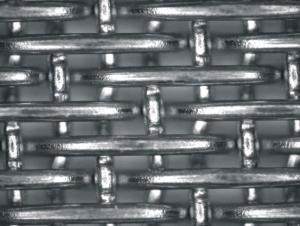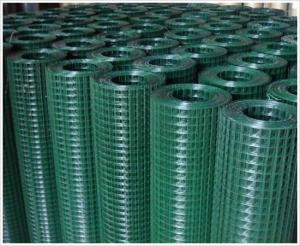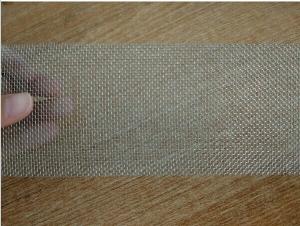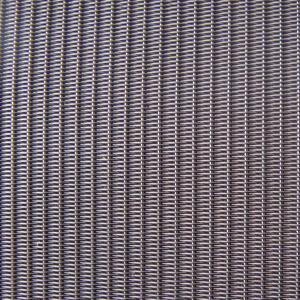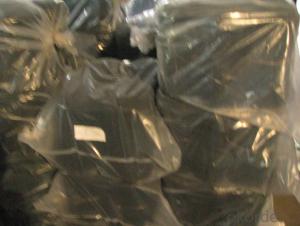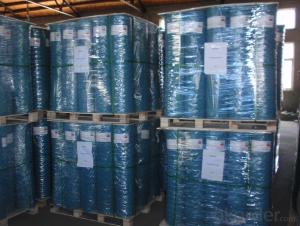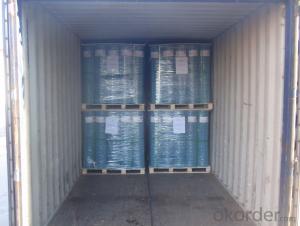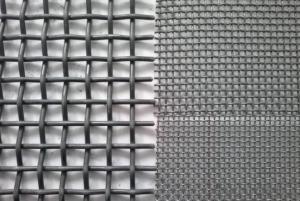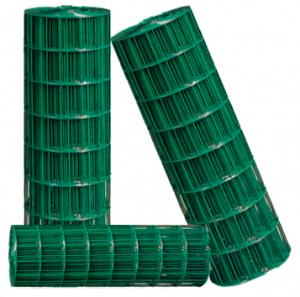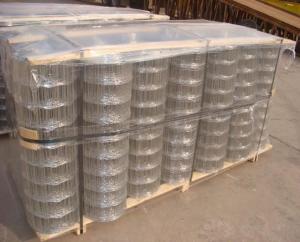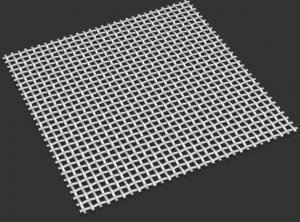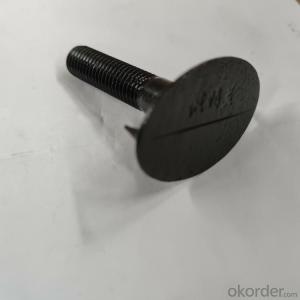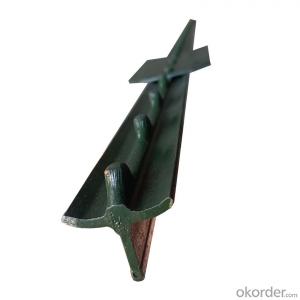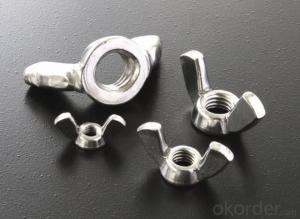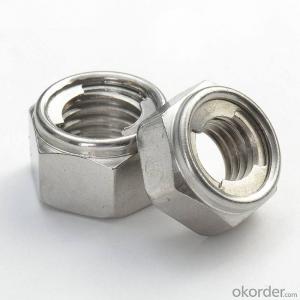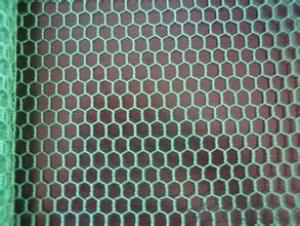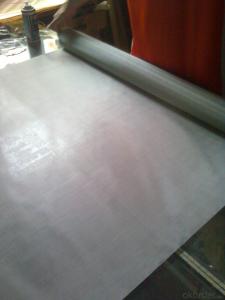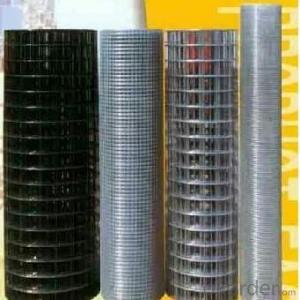Stainless Steel Five Heddle Mesh
- Loading Port:
- Tianjin
- Payment Terms:
- TT OR LC
- Min Order Qty:
- -
- Supply Capability:
- 500 m²/month
OKorder Service Pledge
OKorder Financial Service
You Might Also Like
Five Heddle Weave Wire Cloth providesa rectangular opening. The unique design of this mesh can assist increaseddrainage and flow properties. This mesh also has a smooth surface on one side.
Material: Stainless steel wire SUS304,SUS304L, SUS316 or SUS316L.
Standard width of stainless steel wire mesh: 1m or48". Standard roll length of stainless steel wire mesh: 30m or100'.
Packing: wrapped with moister-proofpaper, then in wooden cases.
Typical Use: Industrial woven wirecloth is used in filtration of petroleum chemical industries, in the form offilter ribbons or filter elements.
Meshes | Mesh | Filter | Filter | Water Permeability | Air Permeability |
107x60 | .0177/.45 | 0.077 | .16-.18 | 16.6 | 7620 |
78x58 | .0213/.54 | 0.127 | .18-.22 | 17.6 | 7970 |
63x33 | .0331/.84 | 0.1 | .26-.29 | 16.6 | 7070 |
23.3x19.4 | .0669/1.7 | 0.49 | .65-.75 | 21.8 | 9550 |
14.5x13.1 | .0984/2.5 | 0.85 | 1.15-1.20 | 21.4 | 9030 |
- Q:Can steel wire mesh be used for creating sunscreens or shades?
- Yes, steel wire mesh can be used for creating sunscreens or shades. Steel wire mesh is a durable and versatile material that can effectively block sunlight and provide shade. Its open design allows for airflow and visibility while still providing protection from direct sunlight. Steel wire mesh can be used in various applications such as window screens, pergolas, or outdoor structures to create functional and aesthetically pleasing sunscreens or shades. Additionally, steel wire mesh is resistant to corrosion and is able to withstand harsh weather conditions, making it a suitable choice for outdoor use.
- Q:What are the benefits of using steel wire mesh in the aerospace industry?
- There are several benefits of using steel wire mesh in the aerospace industry. Firstly, steel wire mesh provides excellent strength and durability, making it suitable for applications that require high load-bearing capacities and resistance to extreme conditions. Secondly, its lightweight nature helps reduce the overall weight of aircraft, enabling better fuel efficiency and lower operational costs. Additionally, steel wire mesh offers excellent corrosion resistance, which is crucial for maintaining the structural integrity of aircraft components in harsh environments. Lastly, its versatility allows for various applications, such as reinforcing composite materials, creating protective barriers, and facilitating airflow management, making it a valuable material for enhancing safety and performance in aerospace engineering.
- Q:Can steel wire mesh be electroplated?
- Yes, steel wire mesh can be electroplated. Electroplating is a process that involves depositing a thin layer of metal onto the surface of an object through an electrochemical reaction. Steel wire mesh can be electroplated by immersing it in an electrolyte solution containing metal ions of the desired plating material, such as nickel or chromium, and passing an electric current through the solution. The electric current causes the metal ions to be attracted to the steel wire mesh, forming a metallic coating on its surface. This electroplating process can provide various benefits to the steel wire mesh, including enhanced corrosion resistance, improved aesthetics, and increased durability.
- Q:What are the different wire mesh coatings available for steel wire mesh?
- There are several different wire mesh coatings available for steel wire mesh, including galvanized, PVC-coated, epoxy-coated, and stainless steel.
- Q:Can steel wire mesh be used for filtration baskets?
- Yes, steel wire mesh can be used for filtration baskets. It is a durable and versatile material that allows for effective filtration and can withstand various operating conditions. The mesh structure helps to trap and separate solid particles from liquids or gases, making it suitable for filtration applications.
- Q:Is steel wire mesh suitable for marine or coastal applications?
- Steel wire mesh proves to be a fitting choice for marine or coastal purposes. Renowned for its robustness, endurance, and ability to resist corrosion, this material stands out as the perfect option for regions exposed to saltwater or high levels of moisture. Its capacity to endure the challenging circumstances commonly encountered in marine and coastal areas renders it appropriate for a wide array of applications, such as seawalls, marine barriers, fish farms, and offshore structures. Furthermore, the corrosion resistance of steel wire mesh can be augmented through galvanization or the application of protective coatings, thereby guaranteeing long-lasting functionality and durability in these environments.
- Q:What are the different wire mesh openings available in steel wire mesh?
- There are several different wire mesh openings available in steel wire mesh, each designed for specific applications and requirements. The most common wire mesh openings include: 1. Square Opening: This is the most basic and commonly used wire mesh opening. It is characterized by equal-sized square openings formed by intersecting wires at 90-degree angles. Square openings are versatile and can be used for a wide range of applications. 2. Rectangular Opening: Similar to square openings, rectangular openings are formed by intersecting wires. However, in this case, the wires are at 90-degree angles, resulting in rectangular-shaped openings. Rectangular openings are often used in applications where a higher aspect ratio is required. 3. Diamond Opening: Diamond openings are formed by crisscrossing wires at 60-degree angles, creating a diamond-shaped opening. This type of wire mesh is commonly used for filtration purposes, as it allows for efficient flow of liquids and gases while retaining particles. 4. Hexagonal Opening: Hexagonal openings are characterized by six-sided shapes formed by interlocking wires. This type of wire mesh is often used in applications that require a high level of strength and flexibility, such as reinforcement in construction or protection against small animals. 5. Slotted Opening: Slotted openings are elongated rectangular or square-shaped openings that are ideal for applications that require controlled flow or separation of materials. They are commonly used in industries such as mining, agriculture, and food processing. 6. Triangular Opening: Triangular openings are formed by intersecting wires at 60-degree angles, resulting in triangular-shaped openings. This type of wire mesh is often used in architectural applications for decorative purposes or as a design element. It is important to consider the specific requirements of your application when choosing the wire mesh opening size and shape. Factors such as desired particle size retention, strength, durability, and aesthetics will play a role in determining the most suitable wire mesh opening for your needs.
- Q:In the construction work, we do the external walls and to warm the project will use the steel mesh, but the drawings do not specify the practice of steel mesh or steel mesh, only that is hot galvanized steel mesh, but also looking for resources when the touch To a lot of steel mesh called.
- (Diameter 3 ~ 5mm), fine steel (diameter 6 ~ 10mm), thick steel (diameter greater than 22mm).
- Q:What are the different mesh opening shapes available for steel wire mesh?
- Steel wire mesh offers a variety of mesh opening shapes, each with its own characteristics and uses. Some commonly seen shapes are: 1. Square: The most basic and widespread shape, featuring straight wires arranged in a square grid with equal spacing. Square mesh openings are suitable for applications like fencing, window screens, and machinery guards, providing good visibility and airflow. 2. Rectangular: Similar to square mesh, but with longer and narrower openings. This type of mesh is ideal for applications requiring greater strength and support, such as construction, concrete reinforcement, and filtration. 3. Diamond: Mesh openings with diagonally crossing wires, creating a diamond pattern. This type of mesh offers high tensile strength and is commonly used in heavy-duty applications like mining, agriculture, and security fencing. 4. Hexagonal: Also known as chicken wire, this mesh has hexagon-shaped openings formed by twisted wires. It is lightweight and flexible, making it suitable for animal enclosures, poultry netting, and erosion control. 5. Welded: Intersecting wires that are welded together at each intersection. Welded mesh can be manufactured with various opening shapes and is known for its strength and durability. It is widely used in construction, industrial settings, and concrete reinforcement. 6. Expanded: Created by cutting and stretching a solid sheet of metal, resulting in diamond-shaped openings. Expanded metal mesh offers an excellent strength-to-weight ratio and is commonly used in architectural applications, walkways, platforms, and filtration. 7. Woven: Wires interwoven in an over-under pattern. Woven wire mesh can be manufactured with various opening shapes and is versatile, finding applications in screening, separation, and insect protection. These examples represent just a few of the available mesh opening shapes for steel wire mesh. The choice of shape depends on specific requirements like strength, visibility, airflow, and particle retention.
- Q:How does steel wire mesh perform in terms of electrical conductivity?
- Steel wire mesh is generally not regarded as a proficient conductor of electricity. Despite being a metal and possessing some level of conductivity, the interweaving of multiple wires and the small size of the wires in a mesh significantly hinder the flow of electrical current. Consequently, the mesh acts as a resistor, obstructing the movement of electrons. Various factors, such as wire thickness, spacing, and the presence of coatings or impurities on the surface, also impact the electrical conductivity of steel wire mesh. These factors further reduce conductivity, rendering it less efficient for electrical conduction. Nonetheless, it is worth mentioning that steel wire mesh can still conduct electricity to some degree, particularly if the mesh is thick, the wires are closely spaced, or the surface is uncontaminated and devoid of any insulating substances. In specific applications like grounding or shielding, steel wire mesh can prove effective for conducting electrical current. In conclusion, although steel wire mesh possesses some electrical conductivity, it is generally not considered a good conductor due to its design and physical properties. It is important to consider the specific requirements of an electrical application before selecting steel wire mesh as a conductor.
1. Manufacturer Overview |
|
|---|---|
| Location | |
| Year Established | |
| Annual Output Value | |
| Main Markets | |
| Company Certifications | |
2. Manufacturer Certificates |
|
|---|---|
| a) Certification Name | |
| Range | |
| Reference | |
| Validity Period | |
3. Manufacturer Capability |
|
|---|---|
| a)Trade Capacity | |
| Nearest Port | |
| Export Percentage | |
| No.of Employees in Trade Department | |
| Language Spoken: | |
| b)Factory Information | |
| Factory Size: | |
| No. of Production Lines | |
| Contract Manufacturing | |
| Product Price Range | |
Send your message to us
Stainless Steel Five Heddle Mesh
- Loading Port:
- Tianjin
- Payment Terms:
- TT OR LC
- Min Order Qty:
- -
- Supply Capability:
- 500 m²/month
OKorder Service Pledge
OKorder Financial Service
Similar products
New products
Hot products
Related keywords
